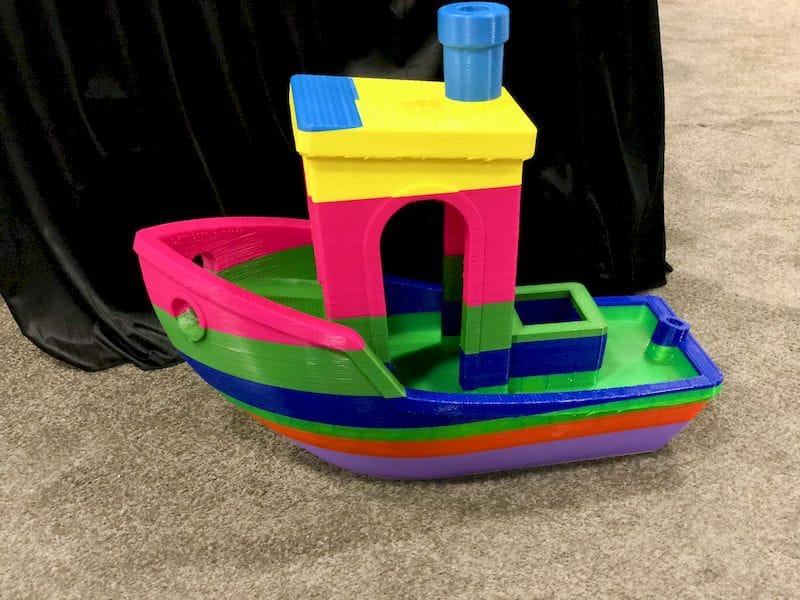
I’m reading a story suggesting that it was “Consumer Indifference” that “killed all hope for 3d printing stocks.”
Could this be true? I’m not so sure.
Let’s do a bit of background first, for those who weren’t there to experience what happened first hand. Here’s the entire lifecycle of 3D printing in a few bullet points (for a much more detailed look at the history of 3D printing, see this lengthy post):
- In the 1980’s inventors developed (and patented) the first basic 3D printing processes
- The patented processes were leveraged to build reasonably-sized 3D printer manufacturing companies that sold prototyping equipment & materials at premium prices
- The patents expired
- Entrepreneurs picked up the patents as they expired and began to create low-cost, desktop 3D printers
- Some of these entrepreneurs (and at least one of the existing players) believed the low cost would enable sales to consumers – in the millions of units
- The consumer angle was pushed very hard and created a buzz around the technology, raising stock prices dramatically
- Eventually consumers realized they could not effectively use the machines, and interest waned – and so did the stock prices
- Stock prices dropped back to approximately where they would have been had there been no consumer boom
- Investors soured on 3D printing
- The expired patents allowed others to continue exploring the technology, leading the to introduction of low-cost engineering material machines and even metal 3D printing gear
- A new wave of applications by industry is being adopted from these new capabilities
Meanwhile, in the story I’m reading on InvestorPlace, writer Luke Lango proposes:
But those enthusiasts underestimated how much every-day consumers just don’t need a 3D printer.
3D printing is a complex, laborious, and time-consuming process that isn’t designed for most of us. The average consumer not only lacks the knowledge to run such a machine, but also the desire. What exactly do I need a 3D printer for?
Plus, the printers cost a whole bunch. And the maintenance costs aren’t cheap, either. Consequently, mass consumer adoption of 3D printing just never happened.
That’s not it.
Let’s look at what’s happening today:
- Professionals are making more use of desktop 3D printers than ever before to rapidly produce prototypes in dozens of highly capable engineering materials
- Certain industries, namely aerospace, automotive and medical, are leveraging 3D printing to produce parts that were impossible to make otherwise, and which provide superior function
- Numerous projects are developing one-to-one customizable products for the public and industry using 3D printing technologies and sophisticated software
So there is success in 3D printing in at least these places. But why success there and not in the consumer market?
In each industry, participants discovered ways to leverage the technology to produce their required output at lower cost, faster or with better quality. That’s a basic business case for success. What business would not want to do those things?
Was there ever a corresponding “business case” for consumers, beyond mere “I want one because it’s fun”?
No. There wasn’t.
Ultimately consumer 3D printing would be used to produce the items we normally acquire at a retail store or through online ordering. Theoretically we could get them faster, cheaper and of better function, just like industry. Press a button and get your thing.
Except no one figured out how to do that. At least, not yet.
I believe the rest of industry was not in a position to support this concept. Consider a manufacturer who sells replacement parts – and receives high margin when doing so. Why would they release their precious 3D designs to be deployed widely, potentially losing control of them, so that their otherwise captive customers could get them more cheaply? There was no motivation for industry to participate.
Further, there was – and is – no proper infrastructure for deployment of 3D objects to millions of consumer 3D printers. Where is the massive Amazon-like service that holds libraries of customizable parts to match those that are actually required? It certainly is not Thingiverse or similar respositories. Proper payment mechanisms need to be developed to ensure participating companies are motivated financially. Management systems must be made for companies to very easily get started and expand their digital object offerings.
No one has done these things yet, at least in a way that would catch on.
Now back to the question, was it consumer indifference that killed the stock prices? No, it was the lack of inventiveness by those in the 3D printing industry, who did not solve these issues before deploying their products.
If consumers were shown benefits in the same way that industry has seen and adopted 3D printing technology, then the story might be quite different. And it still could be.
It may be a chicken and egg scenario to some degree, but that’s where we are: Waiting for the eureka moment.
Via InvestorPlace

